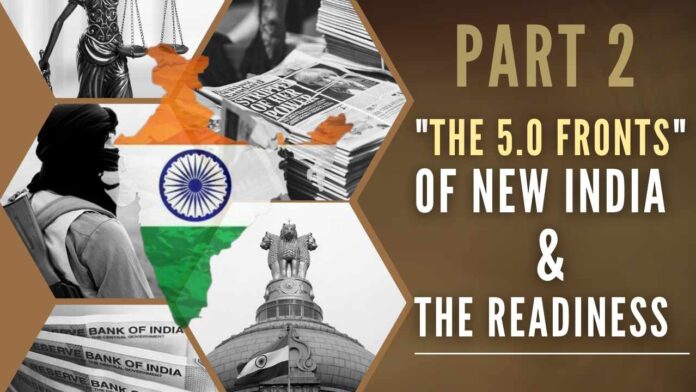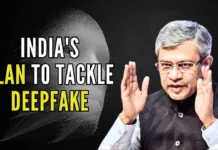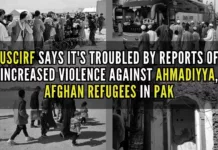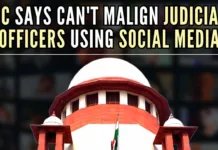
The previous part of the article can be accessed here Part 1. This is the second part
The 5.0 Fronts readiness
The previous article sets the stage and offers an overview of the current political and social climate. Clearly, India has been engaged in ongoing readiness against the threats on LAC and LOC (2.0 fronts) and internal enemies (0.5 front) since General Rawat underlined the concept of 2.5 fronts.
This article focuses on India reassessing the 0.5 front due to internal threats and increasing its security measures and tools against visible or not so-visible enemies. Here is how we quantify and elaborate on different fronts, not as a military strategist but based on the out-of-control violence and threat to peace in society across India while Kashmir is getting relatively peaceful. Let us underscore at the outset that the relative weights assigned to each of the threats below are not a result of any statistical modelling but a simple-minded approach to our informed thinking. The readers may quantify each threat differently.
Growing Jihadi and Islamic fundamentalism = 1.0 front
Let us begin by stating the obvious that for decades India faced terrorism and killings by Jihadis in Kashmir and other border towns from across the LOC. However, the world remained in denial to recognize it as an act of terrorism until 9-11. The U.S. and the world witnessed numerous violent attacks since then and thus collective wisdom of fighting global terrorism together. It must be noted that a large part of such terrorist acts was carried out by Jihadi Muslims with extremist views living within or beyond the country under attack. Let us be clear that while all Muslims are not terrorists, a significant number of them have engaged in acts of violence bordering terrorism.
For India, what has changed, and why has a growing spate of violence in recent years. It goes back to the fact that India’s less than 10% population of Muslims at the time of partition has nearly doubled while the percentage of Hindus has shrunk. With such a large-scale population increase, they are getting more belligerent and bolder with growing support from anti-Hindu politicians, journalists, and foreign influencers. It is just the nature of Islamic believers when they reach a critical mass, such as what the world is witnessing in several European countries. They wage street war, ask for a dress code like hijab in public places, and use Sharia law, an alarming trend globally.
In India’s context, we don’t have to go too far to recount numerous troubling events since 2019. A few notable examples include the protests and blocking of highways and violent Delhi riots in 2019 following the passage of CAA/ NRC. The passage of CAA even reached offshore to many U.S. cities passing anti-CAA resolutions as a show of solidarity with Islamists. Recently, India had numerous stone-pelting events after Friday prayers by Muslim mobs and the brutal beheading of a Hindu in Udaipur by two radicalized Muslims who allegedly visited Pakistan. It is unrealistic to witness similar incidences of brutality by people of Jihadi following and calls for killing Nupur Sharma. Street violence and the burning of property against the most innovative Agnipath also happened recently. In addition, the continued bigotry and false claims continue against Hindu temples which were destroyed and mosques built.
We cannot underscore that the recent wave of protests and killings or at least the threats to kill are on the rise by leaps and bounds. The State of Uttar Pradesh is a bright spot today with measures to protect against the multitude of threats due to the radical Islamists and Jihadis from within. India as a whole must learn from the U.P. model. We argue that the original 0.5 front due to internal security threats is expanded to include the examples discussed above. Therefore, we call for India to take the threats seriously which are at least as big, if not bigger, as the border wars with Pakistan and/ or China in the original doctrine of 2.5 fronts.
Lutyens and leftist journalism, social media, and political activism = 1.0 front
We combine three intertwined elements and quantify the consequential threat as much as we face on LOC or LAC. It is unfortunate that many self-proclaimed journalists, even without the intellect, who were reigning Indian politics during the UPA regime for decades, have lost access to the powers to be and policies and are thus frustrated. They are abusing the power of their pen to spread venom against India. These are known names associated with NDTV, India Today, the Times of India, etc., to name a few. Another way to identify them is to review who were and still are backers of the jailed activist Setalvad (more later). Some of these journalists have made inroads in the corporate foreign media such as New York Times, Washington Post, BBC, Al Jazeera, Time magazine, The Economist, etc. These India-born journalists have sold their journalistic conscience and integrity to feed the frenzy with narratives to please the foreign leadership and corporate. They constantly change the narrative about factual stories so capriciously and cleverly that even they put Indian chameleons to shame by changing the color of their skin.
The misuse of the power of their pen in print and social media is regrettably backed by the political parties in opposition, e.g., Congress, CPI, SP, and AAP to name a few. Many veteran politicians have deep pockets with ill-gotten money using corrupt practices. The ongoing legal challenges against the mother-son duo in the National Herald case is one stark example in which they got justice delayed using various tactics but the truth cannot be denied for too long. Another example is that of the former Congress party Finance Minister Chidambaram and his son on bail while the investigations by CBI continue[1]. Interesting to note the BBC report and a tweet by none other than Rahul Gandhi facing similar legal challenges. A perfect example of Chor-Chor Mausere Bhai.
Modi’s Govt is using the ED, CBI & sections of a spineless media to character assassinate Mr Chidambaram.
I strongly condemn this disgraceful misuse of power.
— Rahul Gandhi (@RahulGandhi) August 21, 2019
This shows the extent of internal threats to India’s sovereignty by so-called India’s sons/ daughters as elected representatives and sworn to defend India. These long-term career politicians and journalists are steadfastly together to “oppose” Modi irrationally and see him go. What was most shocking was when Owaisi Asaduddin asked, “Who will protect you when Modi, Yogi go away[2].” Is it not the lowest of the low thinking of the so-called defender of Islam and representative of Muslims in India? Owaisi, reportedly, has the intellect and experience to weigh what is in the national interest but his ability is overpowered by only one ideology and that is taking Modi out of the political scene. These misguided and self-serving politicians cannot stomach Modi’s growing leadership on the global stage. It is ironic that they have no pride in the stature of India as a strong democracy rooted in diplomacy, desi hood, and dharmic traditions.
Let us quickly talk about social media and its influence on India’s politics, people, and policy. India is blessed to have one of the largest numbers of people using Facebook, WhatsApp, Twitter, etc., and thus their digital connectedness globally. Let me quote Anuradha Rao, an academician[3], “The advent of social media has changed how politics is being organized and conducted, as well as the nature of political communication in India.” She goes on to highlight that, “… several ethical dilemmas arise with the involvement of political actors in the non-ethical uses of social media, compounded by the proliferation of social media among a largely digitally illiterate population. Particularly in the area of national security, political actors will have to weigh the political advantages against the very real security and human costs that would accrue from prolonged non-ethical uses of social media.”
This research uses the example of Pulwama/ Balakot, a topic debated for too long to risk India’s security and question Army’s achievements., Today the social media campaign is justifying beheading in Udaipur, putting Nupur Sharma on trial, depicting Hindu Goddess Kaali in the most disgusting way by a Canadian-based Hindu lady in the name of “creativity.” She found an ally for follow-up justification by a sitting Member of Parliament and thus a serious matter threatening India’s internal security and an effort to escalate tensions in the country. Quoting Rao once again, “unethical political communication via social media channels is not an issue that should be studied or tackled in isolation.” Let me add that all stakeholders must use caution in propagating facts as fake, distorted, and/ or sensational news.
Undue influence by foreign powers = 0.5 front
This category includes political, diplomatic, and/ or economic pressure on India’s foreign policy and internal matters. Historically, the Western powers still hold the colonial mindset and wish to dictate what India should do and how they should think. They fail to recognize that New India is on the path of serious development and custodian of its own foreign policy and destiny. The most recent examples of undue influence include direct and indirect pressures using twisted diplomacy on India to side with the U.S. and NATO regarding the unfortunate Ukraine-Russia war. Reportedly, the U.S. has used its influence on Qatar to incite diplomatic strife for India in the wake of Nupur Sharma’s statement of fact.
The U.S. is unduly raising false allegations that India is not observing religious freedom against the so-called Muslim minority, a significant number of whom are spreading Jihad in India. The gruesome beheading in Udaipur is the ghastliest example of their Jihadi and extremist views. The fundamental Muslim clerics want India to be governed by Sharia law. Several recent reports by USCIRF and the State Department accused the most tolerant India of practicing human rights violations. Should we be asking the U.S. what is their business in interfering in India’s internal matters? The use of government machinery to malign India is troubling while courting her to be a part of QUAD. Does it not show the very inconsistent behavior of the United States?
Contrary to the examples cited in these reports without even being on the ground because of Covid, let me refute it by citing the independent data from the PEW RESEARCH FOUNDATION[4]: Based on about 30,000 interviews conducted in India’s vast geography and people of all faiths, the survey found:
- The vast majority of Indians are very free today to practice their religion (91%). In that roughly nine-in-ten Buddhists (93%), Hindus (91%), Muslims (89%), and Christians (89%) say they are very free to practice their religion, as do 85% of Jains and 82% of Sikhs.
- Did they experience discrimination on a personal level in the last 12 months? Those saying yes include Muslims (21%), Hindus (17%), Sikhs (18%), Christians (10%), and Buddha and Jains (13% each). In other words, no widespread discrimination. There were regional variations, however.
Foreign NGOs = 0.25 front
Most of us have heard and read about the tightening of FCRA, the law for the proper monitoring of the utilization of foreign funds for social causes. Reportedly, thousands of NGOs lost their FCRA credentials for misusing, fraud, and/ or abusing the foreign funds for anti-national activities such as aiding and abating street violence and religious conversions. Examples include many NGOs funded by the Ford Foundation, George Soros, Saudi Arabia, Turkey, and others. Let us cite just one recent example of Teesta Setalvad who relentlessly fabricated and forged documents/ evidence. She mounted a politically motivated legal challenge against Modi for nearly two decades backed by the Congress party and using the foreign and charitable funds for personal use. Finally, Satyamev Jayate was upheld by the Supreme Court ending Setalvad’s never-ending political vendetta. She and others are behind bars but the usual suspects and supporters (Lutyens/ leftist media and politicians discussed above) are still backing her up vigorously in print and on social media. Unfortunately, the fraudulent and unlawful acts committed by people like Setalvad using NGOs and FCRA for personal gains put many legitimate socially active NGOs at a huge disadvantage. Their applications are pushed on the backburner while MHA must investigate the wrongdoings of people like Setalvad.
India’s judiciary = 0.25 front
When General Rawat talked of 2.5 Fronts, he could not have imagined that the “blind” system of justice could ever be a part of India’s internal security threat. I could not imagine it either until I saw the spectacle of irrational, arbitrary, and capricious commentary or shall we call it a moral lecture rather than delivering justice by two Supreme Court Justices on July 1.
India, like the U.S. and other democracies, has a three-legged system of governance – the executive, the elected Parliament, and the judiciary. Any of these legs, if broken and/ or damaged, can create havoc and an environment of anarchy. In India, the 1975 imposition of Emergency by the then Prime Minister Indira Gandhi was the blackest day because she did not approve of the judiciary’s decision against her. Reportedly, the executive branch supported her decision, perhaps for the fear of repercussions. India survived and we restored the path of democracy and freedom under our Constitution. This example is to reinforce the importance of the three-legged system of governance in which the judiciary was not broken but the elected and executive colluded.
Traditionally, the court decisions are based on facts and evidence using the legal interpretation by the sitting judge(s) to the best of their ability. In the end, one party may win or lose and when warranted, the losing party may appeal in the higher courts. However, when India’s highest court with no further option for appeal engages in unjust decision-making, it poses the gravest threat to India’s system of jurisprudence and by extension the three-legged governance. Thus, the potential exists for misuse of justice’s power to create an environment of anarchy posing a grave threat to India’s peace and security from within. For example, the SC commentary declared Nupur Sharma singlehandedly responsible for what is happening in India and elsewhere. Whether the justices meant it or not, the social media, the political forces with vested interests, the Muslim clerics with Jihadi ideology, and the leftist, anti-Modi, anti-Hindutva, anti-India media are using the court’s commentary in their narratives to arrest Nupur Sharma. Many of them are perhaps working behind the scene to get the two Jihadis out of jail ignoring the video evidence and admission of guilt/ crime by them including a direct threat to Prime Minister Modi by name.
The justices denied justice to the defendant by not granting her request to club all FIRs to have her allegations heard in one specified jurisdiction. It is my understanding that Indian law provides for such accommodation so that no one is subjected to repeated trials for the same alleged offense. In the case of Nupur Sharma, she had a very strong argument for it because of numerous threats against her life by Jihadi elements. The debate in India’s print and social media has not stopped yet. I have been equally troubled with justice’s commentary and the injustice meted out to Nupur Sharma. I have already expressed my opinion in several different publications and thus repetition here is neither necessary nor justified.
The media conversations for seeking the resignation of justices or impeachment proceedings against them are justifiable in my view. In the meantime, it was important to quantify the threat as “0.25 front” because while such incidences are thankfully rare, these must not be overlooked. The Home Ministry, I hope, takes this unprecedented unjust justice seriously which has the potential to incite religion-based strife and violence. They must review, devise, and implement measures to protect India against internal security threats due to the overreach by our judiciary.
In conclusion, once again, India need not fear the 5.0 Fronts but remain alert and attentive to the changing political, socio-economic, and global conditions in rapidly changing times. The global interconnectedness is a blessing on one hand but it can equally pose a threat to India’s peace, security, and stability with furiously fast propagation of false and fake narratives on social media. We have already seen examples of hundreds of WhatsApp chat groups in Kanpur and other places.
Note:
1. Text in Blue points to additional data on the topic.
2. The views expressed here are those of the author and do not necessarily represent or reflect the views of PGurus.
Reference:
[1] P Chidambaram, India’s ex-finance minister, remanded in custody – Aug 22, 2019, BBC
[2] ‘Who will protect you when Modi, Yogi go away’: Asaduddin Owaisi to UP police – Dec 24, 2021, India Today
[3] How did Social Media Impact India’s 2019 General Election? – Dec 27, 2019, Engage
[4] 1. Religious freedom, discrimination and communal relations – Jun 29, 2021, Pew Research Center
PGurus is now on Telegram. Click here to join our channel and stay updated with all the latest news and views
For all the latest updates, download PGurus App.
- Education and election in Bharat: Race to the top - April 16, 2024
- Kejriwal: “An Insignificant Man” or a corrupt politician with impending prison term - March 24, 2024
- Bharat’s general elections and the Model Code of Conduct - March 22, 2024










